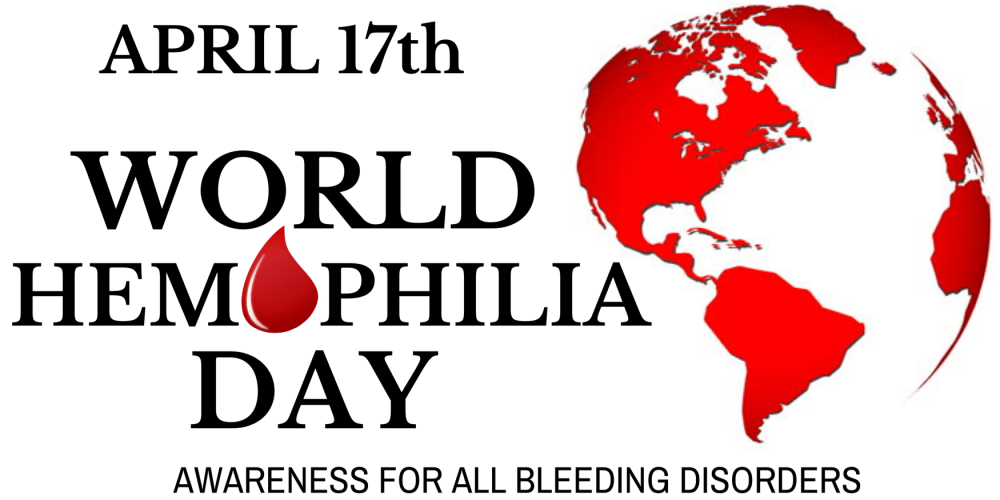APRIL 17th IS A WORLD HEMOPHILIA DAY
World Hemophilia Day is celebrated annually on April 17 at the initiative of the World Health Organization (WHO). This day is intended to draw public attention to the problems of hemophilia patients and to help improve their quality of life.
Hemophilia is a rare hereditary blood disorder that affects one person in 10,000. More often this disease affects men, women mainly act as carriers of hemophilia. According to WHO, there are about 400,000 hemophilia patients on the planet
Hemophilia is characterized by low blood clotting, manifested as frequent bleeding and hemorrhages in joints, muscles and internal organs, which leads to severe lesions of the musculoskeletal system. Hemorrhage into vital organs can lead to the death of the patient, and frequent hemorrhage into joints leads to their irreversible destruction and early disability.
The leading symptoms of hemophilia are increased bleeding from the first months of life; subcutaneous, intermuscular, internal hematomas caused by bruises, cuts, various surgical interventions; profuse post-traumatic bleeding; hemarthroses of large joints with secondary inflammatory changes. In newborn children, signs of hemophilia can be prolonged bleeding from the umbilical wound, subcutaneous hematomas. However, in infancy, hemophilia is rarely manifested due to the fact that the mother's milk contains a sufficient amount of active enzyme - thrombokinase, which can improve the formation of the clot. The likelihood of post-traumatic bleeding increases significantly when a child with hemophilia begins to stand up and walk. For children after one year of age, nosebleeds, subcutaneous and intermuscular hematomas, hemorrhages in large joints are characteristic. Exacerbations of hemorrhagic diathesis occur after infections (acute respiratory viral infections, chicken pox, rubella, measles, influenza, etc.) due to impaired vascular permeability. Due to constant and prolonged bleeding in children with hemophilia develop anemia of varying degrees of severity. A characteristic feature of hemophilia is the delayed nature of bleeding, which usually does not develop immediately after the injury, but after some time, sometimes after 6-12 hours.
Diagnosis - for the diagnosis of hemophilia is used: coagulogram, determination of clotting time.
Treatment - the main method of treatment of hemophilia. For this purpose, concentrates of VIII and IX clotting factors are used in individual doses for each patient and type of bleeding. Donor blood is extremely important for patients with this severe disease. Treatment is simply impossible without the use of donor components and drugs produced from them. And this is a serious problem on an international scale. Hemophilia is one of the most expensive diseases. However, thanks to the constantly used drugs, the quality of life of patients has significantly improved, they can study and work, avoid disability. Nowadays, modern hemophilia patients with proper treatment live as long as healthy people.
Prevention of hemophilia. In order to prevent the birth of a child with hemophilia, medical and genetic counseling is carried out, and prenatal diagnosis is possible.
Madaliev K.A.,
Assistant of the department of dermatovenerology named after professor Zoirov P.T. of the State Educational Institution "Avicenna Tajik State Medical University"
Translated Ismoilov R.

